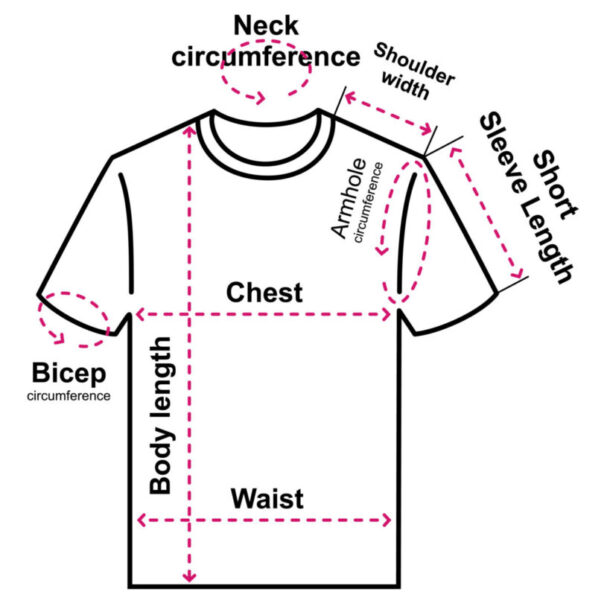Garment Measurement Mishaps
January 19, 2021Fit and comfort are among the most critical considerations a consumer makes when purchasing apparel. Your goal as an importer or retailer of apparel goods is to always to provide your customers with well made garments that meets their expectations. However, managing garment quality can be especially difficult when it comes to importing the garments from overseas manufacturers. Garments can often arrive with incorrect measurements or an improper fit, which could be problematic for sales and product returns if these garments make it to the sales floor or online distribution channel.
Give Us a Call Now Request A Free Project Analysis

How Do Garment Manufacturing Mistakes Happen?
Garment manufacturing is a labor-intensive process and most garments destined for U.S. markets are made overseas. One of the most critical challenges in garment manufacturing is producing a product that ultimately meets all the key points of measure (“specs”) of the designer’s or buyer’s tech pack.
Measurement mishaps arise for a variety of reasons. It is critical for designers and buyers to clearly convey all design details precisely to their manufacturer in a timely manner to minimize chances for errors. Common causes for garments, or apparel, to arrive “out of spec” include:
Miscommunication – Language barriers are a common challenge on the miscommunication front. Designers and buyers must convey clear and understandable details of their designs and specifications to the overseas manufacturer. Miscommunications can often lead to faulty patterns, cutting issues and unintentional poor-quality production in the overseas factory potentially creating problems for your apparel that is destined for the U.S. market. As a result, your product could arrive with incorrect inseam or sleeve lengths, improper chest widths, neck widths or cuff openings, gaping buttons, uneven zippers or many other similar mistakes.
Small Changes to Design – It is a common practice for brands to make subtle changes to their best-selling styles every season to keep them fresh. However, these little updates to the design with new fabrics or trims could lead to big mistakes in manufacturing. Factories are sometimes informed about the augmentations to a design just prior to the production date. In addition, such changes are commonly provided via email and could pass by cutting and sewing floors resulting in errors in your products.
Rushing Production – Your manufacturer may have underestimated the projected timeline of your project. As a result, the factory may end up rushing the production of your garments to simply get them out the door and onto a container ship to meet deadlines. This leaves little to no time for QC audits of the garments and their measurements. Since overseas factories are very busy and producing high volumes of apparel goods for markets around the world, not just the U.S., this could result in shipments that do not meet your specifications.
Importance of Garment Inspections
Inbound product inspection sampling is a useful tool utilized by retailers for determining whether an imported shipment of apparel meets the defined standards for quality and measurements established by the product designer or buyer when the goods were originally ordered.
Typically, when the goods arrive at the U.S. retailer’s distribution center the quality assurance staff will examine random samples from the shipment and inspect for a variety of standards.
Regarding garments or apparel shipments from overseas, the team may examine critical areas such as material quality, craftsmanship, visual appearance and product functionality. They will also look at specific points of measure on garments to determine whether they are exceeding the retailer’s established quality standard tolerances. Measurement issues, or “fit”, are often leading causes for poor product sales performance and product returns.
These inspections are a very important part of the retailer’s receiving process to protect their brand and to be sure that products destined for retail stores or online sales channels will meet their quality expectations.
When the receiving team has performed their AQL (Acceptable Quality Level) audit and has observed too many errors in the garment measurements for example, they will next need to quickly determine whether to cancel the entire purchase order (“return to vendor or manufacturer”) or, conduct a 100% inspection of the shipment sorting the good units from the bad units.
Since timing, and quality, is everything for sales success in the apparel industry, you can just imagine the issues that measurement mishaps can cause retailers. Performing sampling audits or full 100% inspections are important tools for protecting apparel brands as they work to deliver products to retail stores and online sales channels. However, they must act quickly to make decisions and solve issues when they arise in order to minimize the potential impact to future apparel sales opportunities.
How Can QCI Help?
When imported garments arrive with measurement mishaps, you may find yourself scrambling to find an effective solution. The specialists at Quality Corrections & Inspections have performed hundreds of spec measurement projects in our 30 plus year history to help retailers quickly meet their product launch or selling windows for every season.
In addition, QCI can help recover goods in some cases when certain repairs can turn around an “out-of-spec” garment into a piece that meets specifications. Our team can perform special sewing operations, garment finishing services, sortation’s, hardware replacements/repairs, label replacements, ticketing, tagging and much more to provide additional value-added services to your spec measuring project. This may allow you to recover much more sales potential when unfortunate measurement mishaps have impacted your shipment.
When supply chain disruptions such as these arise, allow Quality Corrections & Inspections to quickly and confidentially turn your problem around. Contact us anytime for a no-obligation project analysis. We’ll get back to you with complete project details and a free estimate as quickly as possible.


